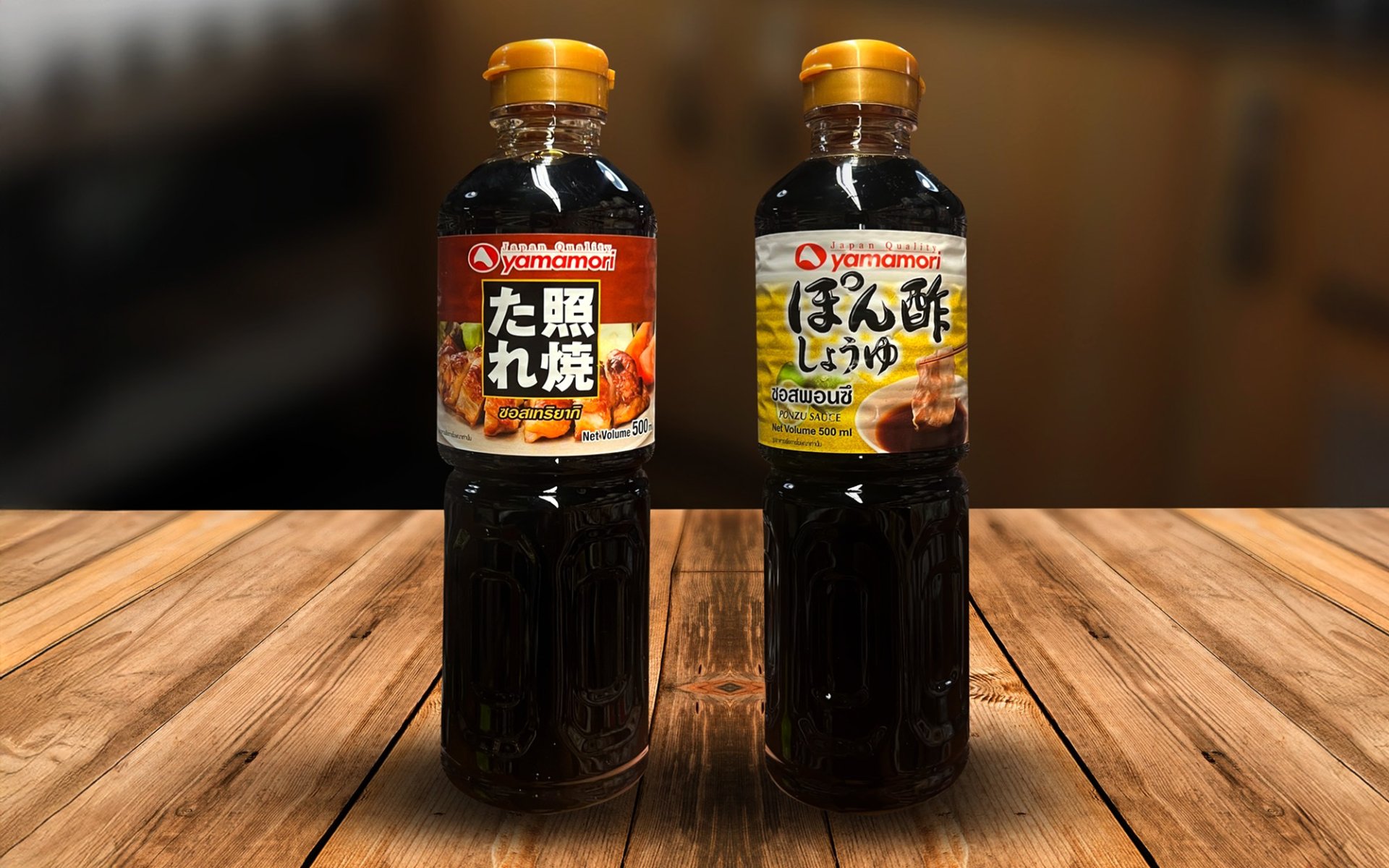Ponzu Sauce and Teriyaki Sauce

Have you ever wondered why Japanese cuisine is so incredibly popular in Thailand? No matter where you go, you'll likely find a Japanese restaurant almost everywhere. One key reason for this popularity is the meticulous use of ingredients and seasonings in each dish to achieve a diverse range of flavors. Among the essential secrets to this deliciousness are the various types of "seasoning sauces" with their unique characteristics. Today, we'll introduce you to Ponzu sauce and Teriyaki sauce.
Ponzu Sauce: Refreshing Zest from Citrus Fruits
Ponzu sauce originated in Japan's Edo period (1603-1868). Typically, it is made from citrus juices like lemon, lime, or yuzu. Its taste is refreshingly tart and it's often used as a dipping sauce for shabu-shabu, cold noodles, gyoza, sushi, and tempura, as well as seafood dishes like various sashimis. It's said that the tartness of Ponzu sauce perfectly complements the freshness of seafood.
Over time, Ponzu sauce has evolved to become more diverse. Some recipes might include mirin (sweet rice wine), dashi (Japanese stock), katsuobushi (dried bonito flakes), or kombu (dried kelp) to add complexity to its flavor. With its versatile uses, Ponzu sauce has become an immensely popular condiment, both inside and outside of Japan.
Teriyaki Sauce: Glaze from Grilling and Rich Flavor
Next, we have Teriyaki sauce, another versatile Japanese sauce, but one that is more modern, having originated in the 17th century. The word Teriyaki combines two Japanese words: Teri (照り), which means shiny or glossy, and Yaki (焼き), which means grilled.
In terms of flavor, Teriyaki sauce differs from Ponzu sauce in that it is richer and not tart. Teriyaki sauce's main ingredients are typically soy sauce, mirin, and sugar. Some recipes may also add sake (Japanese rice wine), ginger, garlic, and sesame oil to create unique new flavors.
Teriyaki sauce began to gain widespread popularity in Japan during the Meiji era (1868-1912). In its early days, this sauce was mainly consumed with seafood, such as fish, shrimp, shellfish, and more, as Japan is a country surrounded by the sea, making these ingredients abundant.
Later, in the 20th century, as Western influences began to blend with traditional Japanese cuisine, the sweet and slightly savory taste of Teriyaki sauce became even more appealing to foreigners. Americans, in particular, commonly used it similarly to barbecue sauce, by marinating meats or as a dipping sauce for various proteins like chicken, beef, and pork. For this reason, Teriyaki sauce is not only suitable for seafood but can also be paired with a wide range of other ingredients.
Versatile Sauces in the Fusion Era
Today, both Ponzu and Teriyaki sauces continue to evolve and adapt over time, with regional variations and differences in recipes. Nowadays, they are not only essential condiments in traditional Japanese cuisine but also integral parts of fusion dishes that are popular worldwide.


